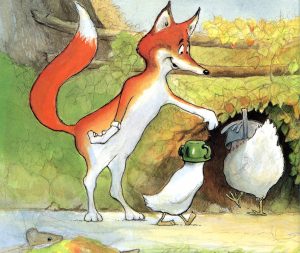(December 5, 2018) In the previous article I went through some of the talking points advanced by supporters of privatization under the “Seed Value Creation/Seed Synergy” consultations. I also posted a useful background article by a friend and colleague.
In order to frighten farmers much has been made of the fact the Harper government went on a destructive rampage at Agriculture and AgriFood Canada. The claim is there is simply not enough money to sustain our present system after the Harper government led vandalism. Their solution is royalties paid to the private sector backed up by draconian regulatory penalties.
So let us be clear: what the corporations involved in “Seed Value Creation/Seed Synergy” want is for Ottawa let them put their hands into prairie farmers’ pockets. As they often say, they are very passionate about what they see as the benefits of this idea.
There are already enough hands in our pockets. Through provincially mandated check-off organizations, like the Alberta Wheat and Barley Commissions or the Saskatchewan Wheat and Barley Commissions, prairie farmers already pay more than enough money to fund our partnership with Agriculture Canada to do seed research and development. More than enough grain farmers also chip in by purchasing certified pedigreed seed as well. As farms scale up in size more and more will do so.
When it comes to funding the sky is not falling. In fact, with all the new and readily available seed technologies the real cost of plant breeding research and development will go down, not up over time. One of the boasts made by one of the private sector cheerleaders is they can use new technology to cut varietal development time down by more than half. If true, the same techniques can also be integrated into our public plant breeding system.
Which leads to the inevitable conclusion that in order to make sure those cost saving do not disappear into corporate profits and are returned to prairie farmers, Ottawa needs to step up and protect the long term control of Canada’s food supply in the interests of farmers and the public. Not to mention avoiding the obvious conflicts of interest baked into a system involving integrated agro-chemical-seed companies.
The proponents of this so-called Seed Value Creation project also try to divert attention from the big three agro-chemical-seed companies.
One of the supporters of the Seed Value Creation process is Canterra Seeds a company that says it is a partner in something called Limagrain Cereals Research Canada (LCRC). The other part of LCRC is Limagrain a French-based seed company. Limagrain itself claims to be the fourth largest seed company in the world as well as a farmer-owned cooperative based in France. Like so many in the private sector, LCRC’s web site claims they are “passionate about using its plant breeding expertise to support the Canadian grains industry.”
There seems to be an awful lot of passion about taking control of the cereals genome away from prairie farmers and the Canadian public – could that be an indication there is a great deal of money to be made charging Canadian farmers, gardeners, and flower enthusiasts royalties to use seed genetics the Canadian public, including grain farmers have already paid for?
Limagrain claims to be the fourth largest seed producer in the world. Let’s put that into context. Limagrain reports overall sales of US $2.8 billion. This is about one tenth as large as Bayer/Monsanto which is the largest of the big three agro-chemical-seed companies with an estimated US$24.5 billion in sales. The smallest of the recently merged big three is Syngenta/ChemChina with estimated combined sales almost seven times greater than Limagrain.
Now, there is nothing wrong with a French farmer-owned cooperative operating a seed business and there is nothing stopping them from doing so. But there is something very wrong with Ottawa allowing any organization to profit by charging Canadians for seed developed from a genome already paid for by Canadians. It is even more offensive when the seed involved is the wheat genome that Canada’s Dominion Cerealist created over a century ago. That Canadian-made wheat genome is still the genetic basis for all temperate zone bread wheat cultivars.
Let’s remember that all the cereals and domestic plants we use were created or adapted to thrive in the Canadian climate through our public plant breeding system. So in terms of genetics, nobody has anything better than what we have now.
Is Limagrain only a seed company? Limagrain’s flagship wheat production system marketed elsewhere under the name CoAXium™ involves a wheat cultivar developed to be tolerant of one type of herbicide. Their promotional material even echo’s the promise from Monsanto that its herbicide tolerant (HT) canola would simplify farmers’ role to “seed, spray, harvest.” It should be noted that unlike Monsanto’s HT canola which was modified by inserting genetic material from another species, Limagrain’s HT wheat appears to use a non-transgenic (non-GMO) methodology.
On its web site Limagrain notes it is partnered with the Colorado Wheat Research Foundation Inc. and an herbicide manufacturer in the development and roll out of this HT wheat. How is this different from what we see now in canola development or in the giant integrated agro-chemical-seed companies?
In our public interest Canadian system this variety would have to meet our much higher milling wheat standards and it would also have to meet with customer acceptance in the milling, baking, and noodle industries around the world. Of course if those who want to harmonize our grain grading and registration standards to the much lower US levels get their way, Canada will be removed as the only producer of high quality cereals and the only potential supplier of non-herbicide tolerant wheat.
Some Seed Value Creation supporters also trot out the notion our plant breeding system is responsible for a decline in wheat acres over the years. The best response to this nonsense came from an astute Manitoba farmer in Winnipeg who observed that “there are more canola acres because there is more demand for canola.”
As another farmer observed “seed development is a conversation that should take place between farmers, the people of Canada, and their elected Government. No one else.” We do not need private companies pushing consultations to convince farmers and Canadians that they know better than those of us actually living and working here how to continue developing our food system.
Let’s also be clear: the Canadian seed genome includes more than just grains. Everything from flax, hemp, and vegetables, to fruits, ornamental plants like roses, and other plants that thrive in our northern climate are all on the table. Now is the time to bring this dialogue back to where it belongs – between farmers, Canadians, and our elected Government. It is time to get the conflicts of interest out of our Canadian food system.
An obvious part of this needs to be a reassessment of the gutting of the farmer-controlled Western Grains Research Foundation and the transferring of its responsibilities to the western Canadian wheat/barley commissions/associations by 2020. But that is a problem for another day.
There is nothing to stop farmers and those who like to eat from showing up at the last meeting in Edmonton – December 6, 2018 10:00 am to 4:00 pm at the Renaissance Edmonton Airport Hotel, 4236 – 36th St. People need to let the Federal bureaucrats know what they think of these ideas.


